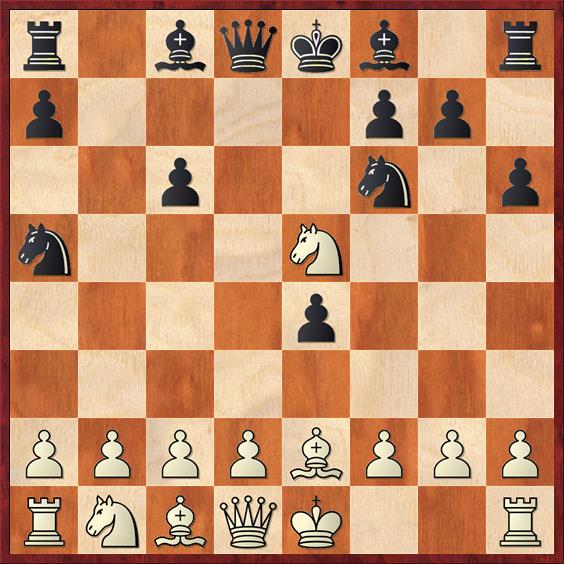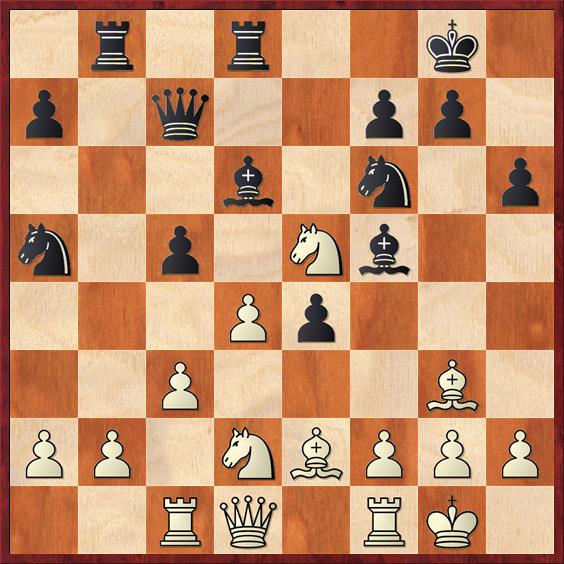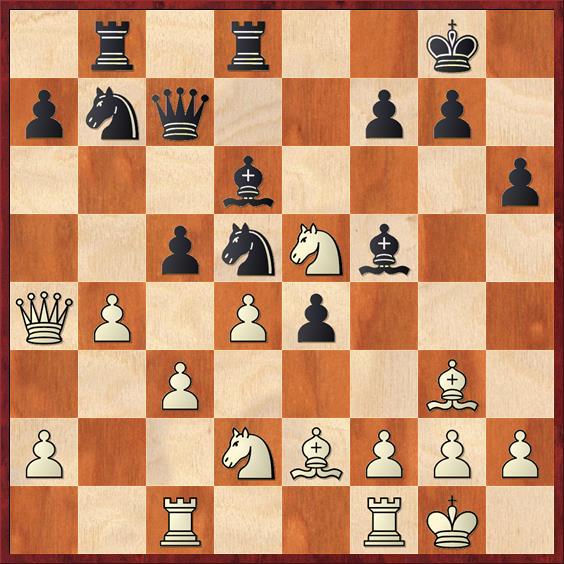Recently it seems a lot of people are passing away in chess… not only big names like Viktor Korchnoi, but also medium-sized names like Frank Berry, who died this week at age 70.
I didn’t know Frank Berry really well, but he and his brother Jim were always two of the leading players in Oklahoma. They made a big impact on the national chess scene in the late ’00s, when Jim was USCF President and the two of them organized two U.S. championships. As stated in the USCF obituary, the U.S. championship could have fallen apart if the Berrys had not stepped up at their own personal expense to organize it in 2007 and 2008. Frank was awarded the Koltanowski Gold Medal by the USCF in 2015, a prize that recognizes outstanding chess organizers.
I played in two events in Oklahoma organized by the Berrys, the 2008 U.S. Championship Qualifier and the 2009 U.S. Senior Open. I didn’t do very well in either of them, but they were well organized and worth the trip from California.
The U.S. Championship Qualifier was a great concept and I wish that someone would bring it back. I think it was the only time in history when there was a tournament specifically designated as a qualifier for the U.S. championship; in previous years major opens like the World Open had offered spots in the U.S. championship to the winners. But the Berrys’ tournament was affordable: $100 for your shot at immortality, instead of $300 or $350 or whatever the entry fee for the World Open was.
One measure of the tournament’s success was that Sam Shankland qualified for his first U.S. championship. He wasn’t Grandmaster Sam Shankland yet, not even Senior Master Sam Shankland: he was just 16 years old and rated under 2300. Surely in any other year he would have had no chance of qualifying for his first U.S. Championship.
Frank Berry was also a strong class-A player, whose peak rating according to the USCF website was 1864 (but it might have been higher before 1991 when the computer records begin). A few years ago he sent me his greatest triumph: a game he won over Fabiano Caruana at the U.S. Open in 2002, on the day after Caruana’s tenth birthday. At that point Caruana was just an expert; who knew that he would at one point become the #2 rated player in the world? That’s why you have to get ’em while they’re young!
I think that Berry sent me the game as a possible topic for a ChessLecture, or maybe a blog post. I never did either one, partly because I didn’t have anything to add to his annotations. It was a variation of the Two Knights that I don’t know all that well, and so it would be hard for me to pinpoint Caruana’s mistake. To some extent that’s an inherent problem with openings like the Two Knights; they’re so technical that it’s difficult to learn fundamental lessons from them, whether you win or lose.
Nevertheless, the game deserves to be remembered, and so here it is, with my less than 100 percent insightful annotations.
Frank K. Berry — Fabiano Caruana
1. e4 e5 2. Nf3 Nc6 3. Bc4 Nf6 4. Ng5 d5 5. ed Na5 6. Bb5+ c6 7. dc bc 8. Be2 h6 9. Nf3 e4 10. Ne5 …
 Position after 10. Ne5. Black to play.
Position after 10. Ne5. Black to play.
FEN: r1bqkb1r/p4pp1/2p2n1p/n3N3/4p3/8/PPPPBPPP/RNBQK2R b KQkq – 0 10
This is the classical, main-line variation of the Two Knights Defense. But even though I play the Two Knights, this is about where my knowledge of the main line stops. The reason is that since the late 1970s I have almost exclusively played the Fritz Variation (5. … Nd4).
So what can I say about this theoretical position that I’ve never played? Well, first let me tell you what got me started playing the Two Knights. Back around 1980, I was looking over some old Chess Lifes (Chess Life & Review back in those days), and came across one of Paul Keres’s columns from 1975 or so. Keres wrote something I’ll never forget: he said that if chess makes any sense at all, 1. … e5 must be a sound answer to 1. e4, and 3. … Nf6 must be a sound answer to 3. Bc4. Until I read that, I had never studied the Two Knights; I suppose I had been too scared of it. I had played the Alekhine for a while, then I lost a few too many games with it and switched to the French. But I wasn’t really happy with the French either; it didn’t suit my style. Once I figured out that I could meet 3. Bc4 with the Fritz (5. … Nd4) and 3. Bb5 with the Bird (3. … Nd4), I became a confirmed double king pawn player for Black.
Interestingly, Fabiano had almost the opposite evolution! He started out as a double king pawn player, but not long after this game he stopped playing it and took up the Sicilian. Then he played the French for a while. Now (perhaps under the influence of Carlsen) he has a more universal approach to openings and plays all of these some of the time. However, I think that Frank Berry taught him a lesson he never forgot. Nowadays, on the rare occasions when he faces 1. e4 e5 2. Nf3 Nc6 3. Bc4, he doesn’t play the Two Knights any more. He plays the Giuoco Piano, 3. … Bc5. In fact, he played it just a couple weeks ago against Rauf Mamedov at the Gashimov Memorial (and won).
The above position is an extremely principled one for both sides. White is saying, how can my position possibly be bad when I’m a pawn up and have no weaknesses? Black is saying, how can my position possibly be bad when I’m ten tempi ahead in development and have a big advantage in space? (Okay, not ten tempi, but still a lot.) The danger for Black is that if his play isn’t super concrete but he just plays generic good moves, he could find himself a pawn down with no compensation.
So it’s possible that Black should try here 10. … Qd4. This is what I mean by a concrete move. The knight is hanging. What is White going to do about it? I think that theory says 11. f4 is the best answer, but now after 11. … Bc5 White is forced to play 12. Rf1. Now Black has some specific accomplishments — he’s forced White to weaken his kingside and lose the castling privilege.
However, there are several other possibilities that are equally good in theory: 10. … Qc7, 10. … Bc5, 10. … Bd6. Caruana played the second one of these: 10. … Bc5. Berry played 11. c3!, which he gave an exclam. I assume this means he knew the line and liked this position. Caruana continued 11. … Qc7 12. d4?! (Berry’s punctuation; he seemed to think 12. f4 is better) Bd6?! (My punctuation. After this move I just don’t see any way that Caruana could get to clear equality. By elimination, 12. … ed must be right. After 13. Nxd3 Bd6 the queen-bishop battery creates some uncomfortable pressure on the kingside; once again White has trouble castling.)
Now both sides finished mobilizing their pieces: 13. Bf4 O-O 14.O-O Bf5 15. Nd2 c5 16. Bg3 Rfd8 17. Rc1 Rab8. (Diagram)
 Position after 17. … Rab8. White to move.
Position after 17. … Rab8. White to move.
FEN: 1r1r2k1/p1q2pp1/3b1n1p/n1p1Nb2/3Pp3/2P3B1/PP1NBPPP/2RQ1RK1 w – – 0 18
This is a position where Black just hasn’t been able to whip up any kind of attack. White has finished his development, castled, and still doesn’t have any weaknesses unless you count the b2 pawn. Maybe Black shouldn’t have played … c5, but if he doesn’t do that, how can he get any pressure on White’s position?
Now Berry makes a move that shows who’s boss in this position: 18. b4! Black can’t take on b4 because of a discovered attack on his queen. So 18. … Nb7 is forced. Berry’s next two moves are really instructive. He doesn’t race to capture on c5, because 19. bc would be met by 19. … Nxc5! instead, he keeps making more and more threats: 19. Qa4 (with ideas of Qxa7 or Nc6) 19. … Nd5 (diagram).
 Position after 19. … Nd5. White to move.
Position after 19. … Nd5. White to move.
FEN: 1r1r2k1/pnq2pp1/3b3p/2pnNb2/QP1Pp3/2P3B1/P2NBPPP/2R2RK1 w – – 0 20
Berry played 20. Ndc4!, again a move I really like. There is no rush. Instead of taking prematurely on a7 or c5, White keeps mobilizing and keeps making more threats. Now taking on d6 is a big threat. In fact, it’s getting hard to keep track of all the things that are hanging in Caruana’s position.
At this point, Berry writes, Caruana thought for 20 minutes and played 20. … cd 21. cd Bd7. Berry retreated 22. Qd1, which was perhaps erring more than necessary on the side of caution, but I don’t think it really matters because Caruana’s position is coming apart so badly. After 22. … Nxb4 23. Nxd6 Qxd6 24. Nc6 (As Berry notes, 24. Nxf7 is also good) 24. … Qf8 25. Nxb8 Rxb8 26. Bxb8 Qxb8 27. Rb1 White is up two rooks for two knights.
 Position after 27. Rb1. Black to move.
Position after 27. Rb1. Black to move.
FEN: 1q4k1/pn1b1pp1/7p/8/1n1Pp3/8/P3BPPP/1R1Q1RK1 b – – 0 27
A pretty nice position to have against a ten-year-old prodigy, don’t you think?
I will skip over the rest of the game (which went twenty more moves) because it’s basically academic. Berry criticized a couple of his own moves for not being the most accurate, but I think that there’s not really anything to complain about. At no point did he let his advantage slip. In the end he gave back one of the exchanges in order to win Black’s a-pawn and create an unstoppable passed pawn.
All in all, if anybody can show me a more impressive takedown of a future world #2 by a class-A player, I’d be interested in seeing it! No wonder Caruana never wanted to play the Two Knights again. Moves 18 to 20 made an especially good impression, showing impressive patience and a master-level appreciation for the value of multiple threats.



{ 4 comments… read them below or add one }
Nice work by Frank. When I learned the Two Knights as Black, I was taught that a large point of 10…Bc5 is actually specifically to induce 11.c3, putting a pawn where White would like to place his knight. 12…exd3 is indeed the right response to 12.d4.
In my experience with the Two Knights at amateur level, Black actually doesn’t want to rush too much trying to make concrete threats but should patiently get all of his pieces into position, after which some compensation usually manifests itself. In particular, he generally wants to take the time to get the knight on a5 back into play despite all of the “lost time”, not only because it’s a good attacking piece but also because it tends to be loose out there. White looks pretty good optically but it can take a while to get all his queenside pieces out.
Let me add to this list the Spanish GM Arturo Pomar, who passed away on May 26th, 2016, at the age of 85.
When he was 12 he draw a famous game against Alekhine, in 1944.
http://www.chessgames.com/perl/chessgame?gid=1013576
He became IM when he was 22 years old, and GM when he was 30. In spite of his great chess skills, he had to combine chess with a public servant job for living.
Positional player, he left us the book “Small advantages in the endings”, Editorial Ricardo Aguilera, 1958 (in Spanish).
Rest In Peace Arturo, the chess world will remind you.
I beat GM Maxim Rodshtein when he was a 12-year-old CM and GM Alik Gershon, once when he was a 10-year-old CM (and I was 15), and once more when he was already 16 and World U-16 champion, and a FM.
IM Dr Danny Kopec, RIP.